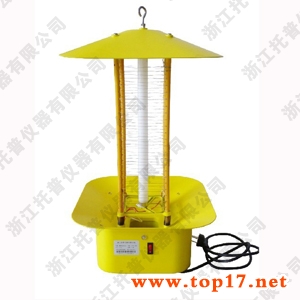Many years of planting fruits and vegetables, many farmers are aware of the hazards of using pesticides in large quantities. They also know that agricultural products with excessive pesticide residues have almost no market. Therefore, many regions have begun to insist on not using pesticides to kill insects. Instead, they use electric shocks. Pest killing lamp kills insects. Electric shock insecticidal lamp is a highly recommended insecticide tool in the current development of green agriculture. The insect lamp is energy-saving and environmentally friendly. After application, the vegetable produced at the base is green and healthy, and it is very popular with the market. Therefore, the current For agricultural development, electric shock lamp is more popular among farmers. As the name suggests, electric shock killing lamps use electric shock to kill pests. It is a new type of control technology that utilizes the characteristics of insect pests such as phototaxis and wave-like waves to trap and kill pests. There are many types of electric shock insecticidal lamps, which can trap and kill nearly 20 kinds of vegetable pests of the order <Lepidoptera, Coleoptera, Orthoptera, and Homoptera. They are suitable for crop planting bases such as vegetable gardens, orchards, and tea gardens. The electric shock insecticidal lamp not only has a strong trapping ability, but also has a good prevention and control effect, and is convenient in operation, simple in management, and energy-saving and environmentally friendly. Killing pests can also feed chickens, which is a good safe high protein feed. At present, in the process of vigorously promoting green, pollution-free agriculture and vigorously developing the pollution-free fruit and vegetable industry, electric shock-killing lamp has become an important technology for reducing the use of chemical pesticides and effectively solving the problem of fruit and vegetable pests. The application of this technology has played an important role in assisting precision-oriented industrial parks for poverty alleviation and improving the quality of quality fruits and vegetables. Not only does it save farmers a large amount of medication costs each year, it also maximizes the ecological balance, reduces the labor intensity of farmers, makes food more green and pollution-free, and shows good ecological, economic and social benefits. As a result of the promotion of farmers’ income, farmers are very supportive of this change in the method of insecticide. Areas that have not yet been used are actively bringing in new technologies for plant protection. Iron-based laser cladding powders are used in the laser cladding process, which is a technique used to apply a protective coating or build up a desired shape on a metal surface. These powders consist of iron as the main component, along with other alloying elements to enhance specific properties. SS Powder,316L Powder,Steel Powder,Stainless Steel Powder Luoyang Golden Egret Geotools Co., Ltd , https://www.egretgeotools.com

Iron-based laser cladding powders typically have a controlled particle size distribution and composition to ensure optimal performance during the laser cladding process. They are designed to have good flowability and excellent metallurgical bonding with the substrate material.
The laser cladding process involves melting the iron-based powder using a high-energy laser beam, which is directed onto the metal surface. The molten powder then solidifies and forms a metallurgically bonded layer with the substrate. This layer can provide improved wear resistance, corrosion resistance, or other desired properties to the metal surface.
Iron-based laser cladding powders are commonly used in industries such as aerospace, automotive, oil and gas, and manufacturing, where there is a need for high-performance coatings or repair of damaged components. They offer advantages such as precise control over the coating thickness, minimal heat input, and reduced dilution with the substrate material.
Overall, iron-based laser cladding powders play a crucial role in the laser cladding process, enabling the creation of high-quality coatings and repair of metal components with improved performance and longevity.